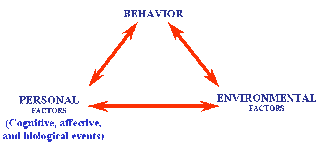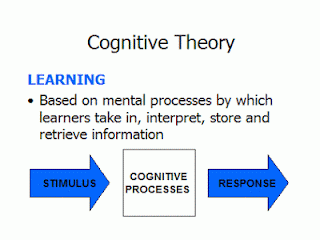Learning
Leraning is the process, how an individual learn? what are the steps of learning, ? These all questions are resolver by this Leanring Theory, Whic is explained below:According to stephen Robin " Learning is a relatively permanent change in behavor that occurs as a result of experience"
Learning Theory
The focus on process obviously takes us into the realm of learning theories – ideas about how or why change occurs. On these pages we focus on four different orientations (the first three taken from Merriam and Caffarella 1991).
the behaviourist orientation to learning
the cognitive orientation to learning
the social/situational orientation to learning
The behaviourist orientation to learning
The behaviourist orientation to learning. The behaviourist movement in psychology has looked to the use of experimental procedures to study behaviour in relation to the environment.
John B. Watson, who is generally credited as the first behaviourist, argued that the inner experiences that were the focus of psychology could not be properly studied as they were not observable. Instead he turned to laboratory experimentation. The result was the generation of the stimulus-response model. In this the environment is seen as providing stimuli to which individuals develop responses.
(1) Observable behaviour rather than internal thought processes are the focus of study. In particular, learning is manifested by a change in behaviour.
(2) The environment shapes one’s behaviour; what one learns is determined by the elements in the environment, not by the individual learner.
(3) The principles of contiguity (how close in time two events must be for a bond to be formed) and reinforcement (any means of increasing the likelihood that an event will be repeated) are central to explaining the learning process. (Merriam and Caffarella 1991: 126)
The cognitive orientation to learning
The cognitive orientation to learning. Where behaviourists looked to the environment, those drawing on Gestalt turned to the individual’s mental processes. In other words, they were concerned with cognition – the act or process of knowing.
James Hartley (1998) has usefully drawn out some of the key principles of learning associated with cognitive psychology. As he puts it: ‘Learning results from inferences, expectations and making connections. Instead of acquiring habits, learners acquire plans and strategies, and prior knowledge is important’ (1998: 18). The principles he identifies are:
() Instruction should be well-organized. Well-organized materials easier to learn and to remember.
() Instruction should be clearly structured. Subject matters are said to have inherent structures – logical relationships between key ideas and concepts – which link the parts together.
() The perceptual features of the task are important. Learners attend selectively to different aspects of the environment. Thus, the way a problem is displayed is important if learners are to understand it.
() Prior knowledge is important. Things must fit with what is already known if it is to be learnt.
() Differences between individuals are important as they will affect learning. Differences in ‘cognitive style’ or methods of approach influence learning.
() Cognitive feedback gives information to learners about their success or failure concerning the task at hand. Reinforcement can come through giving information – a ‘knowledge of results’ – rather than simply a reward.
() Instruction should be clearly structured. Subject matters are said to have inherent structures – logical relationships between key ideas and concepts – which link the parts together.
() The perceptual features of the task are important. Learners attend selectively to different aspects of the environment. Thus, the way a problem is displayed is important if learners are to understand it.
() Prior knowledge is important. Things must fit with what is already known if it is to be learnt.
() Differences between individuals are important as they will affect learning. Differences in ‘cognitive style’ or methods of approach influence learning.
() Cognitive feedback gives information to learners about their success or failure concerning the task at hand. Reinforcement can come through giving information – a ‘knowledge of results’ – rather than simply a reward.
The social/situational orientation to learning
The social/situational orientation to learning. It is not so much that learners acquire structures or models to understand the world, but they participate in frameworks that that have structure. Learning involves participation in a community of practice.
Social learning theory ‘posits that people learn from observing other people. By definition, such observations take place in a social setting’ (Merriam and Caffarella 1991: 134). Within psychology, initially it was behaviourists who looked to how people learned through observation. Later researchers like Albert Bandura looked to interaction and cognitive processes. One thing that observation does is to allow people to see the consequences of other’s behaviours. They can gain some idea of what might flow from acting in this way or that.
A more radical model – situated learning – has been put forward by Lave and Wenger (1991). Rather than looking to learning as the acquisition of certain forms of knowledge, they have tried to place it in social relationships – situations of co-participation. As William F. Hanks puts it in his introduction to their book: ‘Rather than asking what kind of cognitive processes and conceptual structures are involved, they ask what kinds of social engagements provide the proper context for learning to take place’ (1991: 14). It not so much that learners acquire structures or models to understand the world, but they participate in frameworks that that have structure. Learning involves participation in a community of practice.
 RSS Feed
RSS Feed Twitter
Twitter
 08:09
08:09
 librarysbbu
librarysbbu




 Posted in
Posted in 







0 comments:
Post a Comment